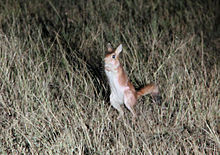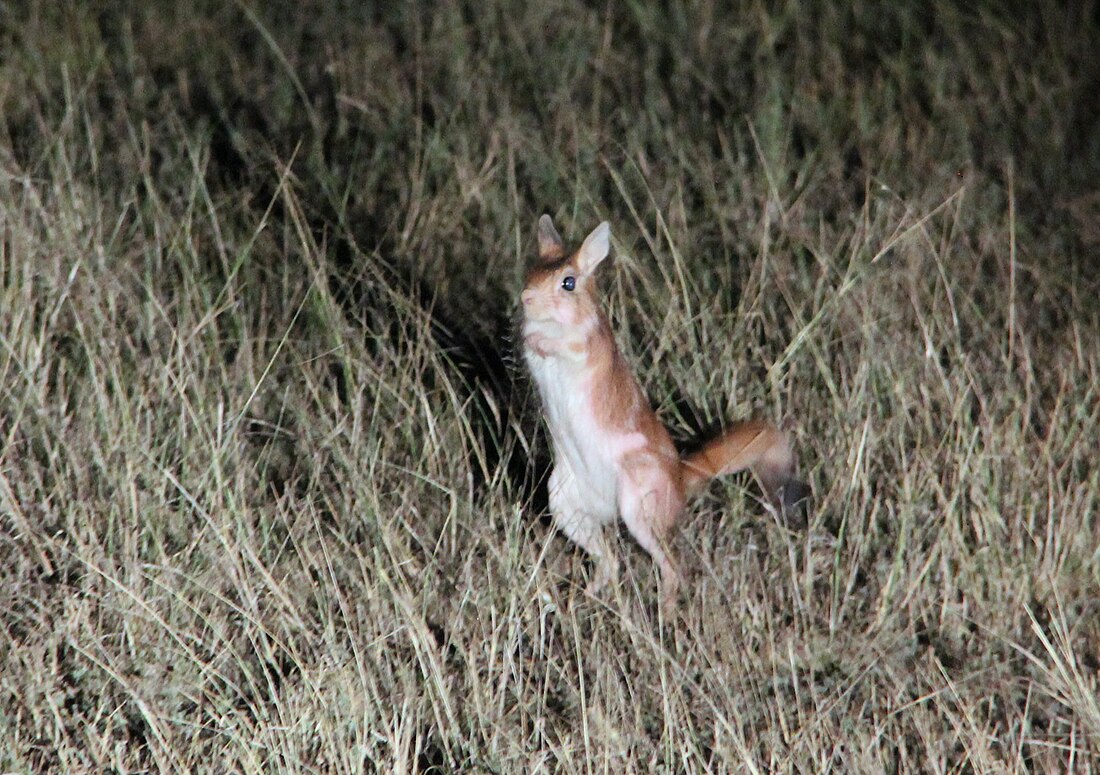The East African springhare (Pedetes surdaster) is an African mammal that is not closely related to the hare, which is not a lagomorph, but is a member of the Pedetidae, a rodent family.
| East African springhare | |
|---|---|
 | |
| In Amboseli National Park, Kenya | |
| Scientific classification | |
| Domain: | Eukaryota |
| Kingdom: | Animalia |
| Phylum: | Chordata |
| Class: | Mammalia |
| Order: | Rodentia |
| Family: | Pedetidae |
| Genus: | Pedetes |
| Species: | P. surdaster |
| Binomial name | |
| Pedetes surdaster (Thomas, 1902) | |
 | |
| Synonyms | |
| |
Taxonomy
Pedetes surdaster was recognised by Matthee and Robinson in 1997 as a species distinct from the southern African springhare (P. capensis) based on genetic, morphological, and ethological differences.[3] P. capensis from South Africa has fewer chromosomes (2n= 38) than does P. surdaster which has (2n = 40) and some other genetic variations.[4] The species was confirmed by Dieterlen in 2005.[1]

Unlike South African springhare (Pedetes capensis), the second and third cervical vertebrae are fused in this species.
Distribution
This species is found in central and southern Kenya and most of Tanzania. A single specimen has been recorded in Uganda near the Kenya border, at Mount Moroto. It is found from sea level up to an altitude over 2,000 m.[1]
Description
The East African springhare resembles a small kangaroo (a marsupial in the family Macropodidae of Oceania), and is about the size of a rabbit (Oryctolagus cuniculus). It is mid-brown, has large erect ears, very short forelegs, and long powerful hind legs.[5] It moves in bounds of up to 12 feet and has a long tail fringed with black hairs which provides balance. It can sit up on its haunches like a squirrel.[6][7]
Ecology
The East African springhare is nocturnal and spends the day in an extensive system of burrows. It lives in semiarid grassland habitats.[1] The diet is the green parts of plants, roots and other vegetable matter, and occasionally insects.[5]
References
Wikiwand in your browser!
Seamless Wikipedia browsing. On steroids.
Every time you click a link to Wikipedia, Wiktionary or Wikiquote in your browser's search results, it will show the modern Wikiwand interface.
Wikiwand extension is a five stars, simple, with minimum permission required to keep your browsing private, safe and transparent.

